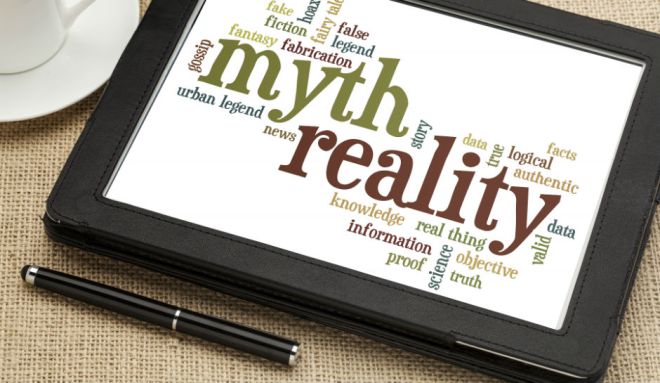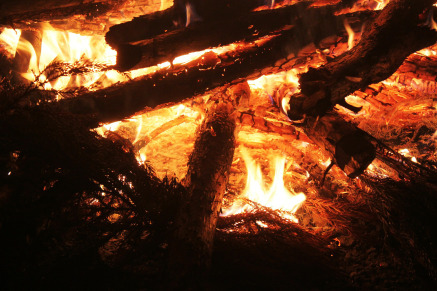 Bonfire image courtesy of Pixabay
Bonfire image courtesy of Pixabay
I’m writing this the day before Guy Fawkes’ Night. Outside there are already fireworks booming all around. Luckily my dog – who is usually hyper anxious – is totally oblivious and is fast asleep beside me.
The brilliant Kit Harington stars in the BBC series Gunpowder , which has brought the history behind Guy Fawkes Night back to life, but I haven’t been able to bring myself to watch it yet. I know the ending is going to be pretty grim! Even as a child I didn’t like the fact that “guys” – homemade effigies made from straw or cloth, and dressed in old clothes – were burnt on bonfires, especially since I was brought up a Catholic and went to a convent school, where the nuns used to terrify us with tales of Catholic persecution.
Here’s the history behind Guy Fawkes’ Night:
During Henry VIII’s reign, and the reign of his daughter Elizabeth I, the Catholic religion in Britain was suppressed, often brutally. When James I came to the throne, Catholics hoped things might change, as the King’s mother was Mary Queen of Scots, and a Catholic herself.
But the penalties for practising Catholicism continued. The Gunpowder Plot was a desperate attempt on the part of a group of Catholics to rid themselves of the King. Their plan was to blow up the House of Lords, with King James and all his Parliament in it.
Guy Fawkes was a member of the Gunpowder plot. Unfortunately for him, the plot was leaked, and Guy Fawkes was caught red-handed in a cellar underneath the House of Lords, with 36 barrels of gunpowder, on November 5th 1605. He was tortured and hanged, along with his fellow conspirators. (I said the ending was grim.)

Nowadays the political overtones of Guy Fawkes’ night have totally disappeared. The day is no longer a public holiday, and Bonfire Night has become a family tradition enjoyed by all. When I was a child, you would often see children with their home-made guys, pulling them through the streets, asking for “A Penny for the Guy”. I haven’t seen this done for years now, and I wonder if children are even taught the history behind the day. Everyone still enjoys the bonfire and fireworks though – whether it’s a large, organised event, or just a small party with fireworks and bonfire in your own back garden.
There are some foods that are traditionally eaten at a Bonfire Party. Here in the north of England, we have our own traditional Bonfire Night fare, consisting of warm pork pie and mushy peas. On a cold, rainy November night, this is delicious! And in the rest of England it’s common to eat gingerbread, but where I live in Yorkshire we have our own variation on the gingerbread recipe. It’s called Parkin, and I absolutely love it. You can find ready made Parkin in all the shops in Yorkshire at this time of year, or you can make it yourself.
Here’s a recipe. It’s easy!
- 200g butter, plus extra for greasing
- 1 large egg
- 4 tbsp milk
- 200g golden syrup
- 85g treacle (molasses)
- 85g light soft brown sugar
- 100g medium oatmeal
- 250g self-raising flour
- 1 tbsp ground ginger
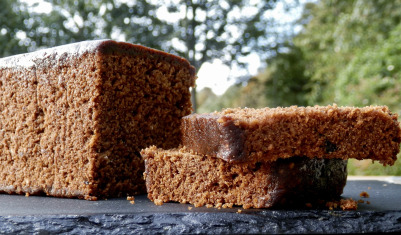 Parkin image courtesy of Pixabay
Parkin image courtesy of Pixabay
Method
*
When I was a child I used to love standing round a bonfire on bonfire night, with my sparklers, and with my dad letting off the fireworks at the bottom of the garden. These days, on a cold – and often rainy – November night, I’m just as happy to sit inside in the warm with my dog, drinking tea and watching everyone else’s fireworks through the window :)
Here are four books to stay inside with on Guy Fawkes’ night:
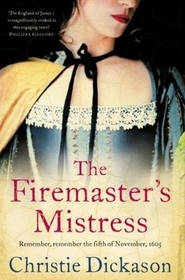 The Firemaster’s Mistress, by Christie Dickason
The Firemaster’s Mistress, by Christie Dickason
In the troubled year of 1605, Papist plots are rife in the gaudy streets of Shakespeare’s London as the fifth of November approaches …
Francis Quoynt, Firemaster, is recently returned from Flanders and dreaming of making fireworks rather than war.
Instead, Quoynt is recruited by Robert Cecil, First Minister, to spy on Guido Fawkes and his fellow conspirators. Meanwhile, Sir Francis Bacon is scheming for high position and spying on Quoynt.
Kate Peach, a glove maker, was Quoynt’s lover before war took him away. Now living in Southwark, she is brought into grave danger. She is a secret Catholic. A fugitive Jesuit is concealed in her rooms. While Francis hopes to prevent the death of King James I and everyone in his parliament, Kate will have to save herself…
The Gunpowder Plot: Terror and Faith in 1605, by Antonia Fraser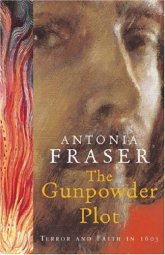
A bestselling historian’s account of the Gunpowder Plot.
With a narrative that grips the reader like a detective story, Antonia Fraser brings the characters and events of the Gunpowder Plot to life. Dramatically recreating the conditions and motives that surrounded the fateful night of 5 November 1605, she unravels the tangled web of religion and politics that spawned the plot.
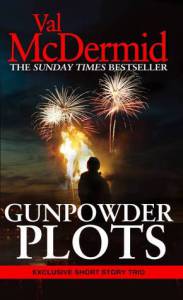 Gunpowder Plots, by Val McDermid
Gunpowder Plots, by Val McDermid
Available in ebook for the first time ever, this trio of classic crime short stories by Sunday Times number one bestseller, Val McDermid – Heartburn, Sneeze for Danger, The Consolation Blonde – shows the early twists and turns that Val now uses in her bestselling crime fiction.
In Heartburn, a traditional bonfire night turns deadly when revenge is in the air. In Sneeze for Danger, a killer is unmasked by unfortunate means, and in The Consolation Blonde, a misunderstanding turns a bestselling author to crime…
.
Guy Fawkes: a Historical Romance, by William Harrison Ainsworth
The first of William Harrison Ainsworth’s seven “Lancashire novels”, the story is based on the Gunpowder Plot of 1605, an unsuccessful attempt to blow up the Houses of Parliament. Ainsworth relied heavily on historical documents describing the trial and execution of the conspirators, of whom Fawkes was one, but he also embellished the known facts. He invented the character of Viviana Radcliffe, daughter of the prominent Radcliffe family of Ordsall Hall – who becomes Fawkes’s wife – and introduced supernatural elements into the story, such as the ability of the alchemist, John Dee, to raise the spirits of the dead.
The novel’s themes deal with British politics and history, focusing on the events surrounding the 1605 plot to destroy Parliament. Ainsworth also introduced gothic elements, to add a terrifying component to the work. The novel was very popular, and marked the beginning of Ainsworth’s 40-year career in historical romances.
Ainsworth’s novel is available free here on Project Gutenberg
* * *
Do you have any special recipes or traditions on Bonfire Night? Do you know of any good historical novels that deal with this event? (Strangely enough, I haven’t been able to find many, so if you know of any others I could add to the list, I’d love to know!)
Hope you enjoy Bonfire Night – and this evening I might just start watching Gunpowder!
Advertisements Share this:



